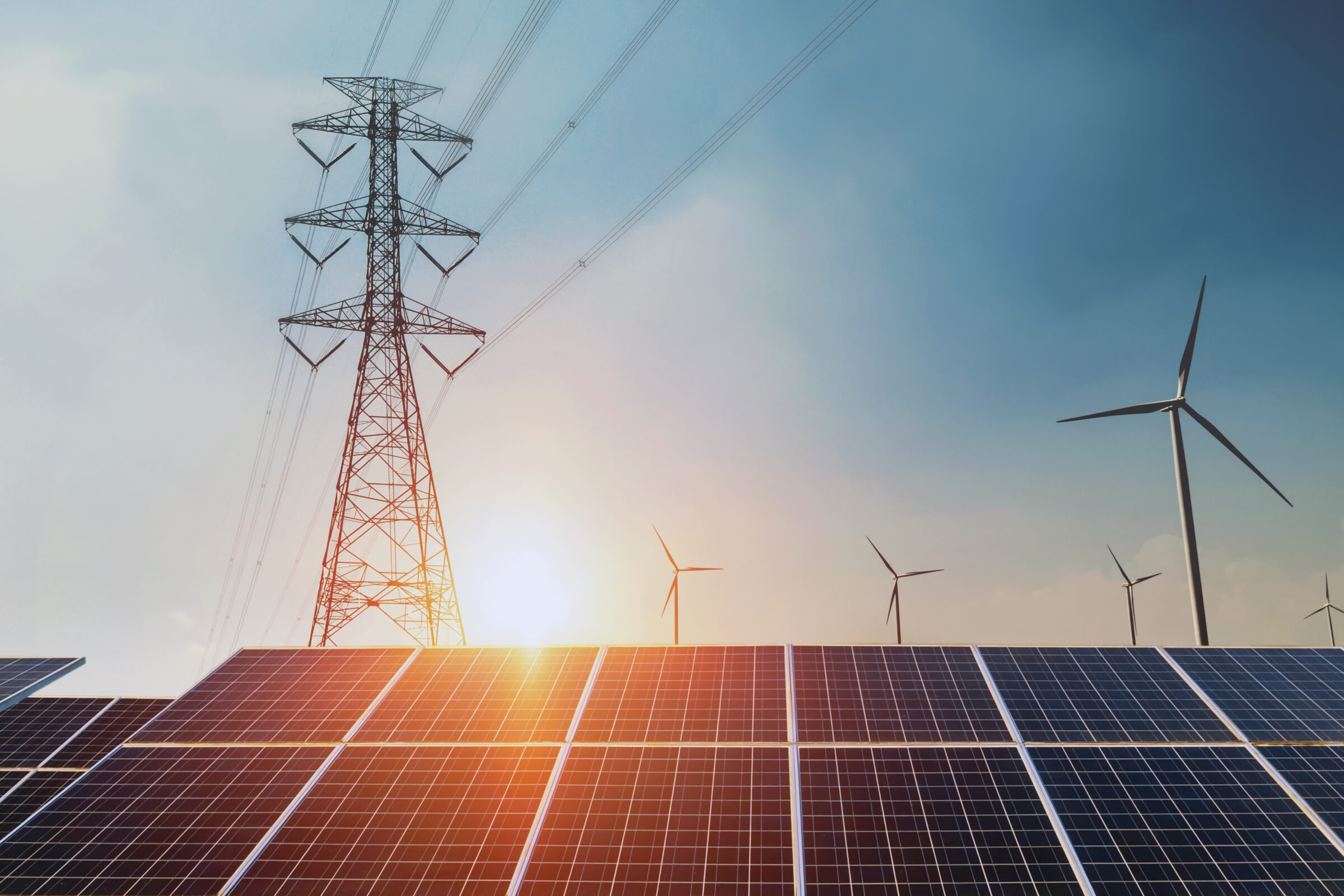ACORE Comments on Large Loads Co-Located at Generation
UNITED STATES OF AMERICA
BEFORE THE
FEDERAL ENERGY REGULATORY COMMISSION
Large Loads Co-Located at Generating Facilities
Docket No. AD24-11-000
COMMENTS OF THE AMERICAN COUNCIL ON RENEWABLE ENERGY
The American Council on Renewable Energy (“ACORE”) submits these comments in response to the Federal Energy Regulatory Commission’s (“FERC” or “Commission”) November 8 Notice of Request for Comments in the above-captioned docket.
I. Introduction
ACORE is a national nonprofit organization that unites finance, policy and technology to accelerate the transition to a clean energy economy. Our membership includes investors, developers, manufacturers, utilities, corporate buyers of renewable power, and professional services firms.
ACORE is filing these comments to ensure that the forest of important policies to meet the accelerating load growth is not lost in the trees of the details of colocation agreements, which are themselves being worked out between the owners of large loads and other parties. The core issues facing the electricity industry are not necessarily the details of the co-location arrangements but the ongoing need for clean, affordable, and reliable energy resources and associated transmission to meet the projected load growth from data centers and multiple other sources. This perspective is well summarized in the statement of Aaron Tinjum of the Data Center Coalition:
Even without co-location, data centers would still require access to power, and the broader grid challenges would persist. As such, it is crucial that we focus on addressing these larger reliability and interconnection issues, rather than attributing them to co-location, which is not the source of these concerns.1
In fact, Grid Strategies just released a new analysis of future load growth, finding that 2029 load is expected to hit 947 gigawatts (GW)—representing a 15% growth in demand in just five years. The projected load growth has increased fivefold over two years, rising from an expectation of 23 GW of growth by 2029 to 128 GW by 2029.2 Grid Strategies notes that the primary drivers of this growth “are geopolitically and nationally strategic industries such as semiconductor chip manufacturing, artificial intelligence (AI), and battery manufacturing.”3
Addressing load growth is therefore essential not just for the data center load but for multiple additional drivers that also provide value to the US economy. For example, over the past two years, 42 new clean energy technology manufacturing facilities have come online, supporting 20,000 jobs, and over 119 more are under development and forecast to support an additional 80,000 jobs.4
The Commission should strive to ensure that needed generation and storage resources can be interconnected to the grid, transmission expansion is well planned to meet this load growth, and advanced transmission technologies are fully utilized. We agree with Chair Phillips’ statement that “data centers, artificial intelligence, indeed the full panopoly of information-related technologies that are transforming the world are national resources, with generational significance, and vast national security and national economic consequences.”5 Moreover, as Chair Phillips stated, these data center owners “want to stay in the United States, and they are willing and able to pay for what those resources will cost.”6 Such a willingness to work out arrangements for meeting these load needs was recently demonstrated by the settlement agreement with Amazon Data Services, Google, Microsoft and the Data Center Coalition and Indiana-Michigan Power, along with other parties in Indiana.7
II. Recommended Actions to Address Load Growth
ACORE recommends that the Commission focus on the need for greater interregional transmission, including by initiating a rulemaking on interregional transmission planning and addressing the pending request for a technical conference on merchant HVDC transmission.8
Transmission, especially interregional transmission, plays an important role in meeting demand growth. Whether or not the large loads decide to collocate with specific generating resources, well-planned transmission expansion will reduce the total needed generation and provide cost savings to consumers. For example, an ACORE-sponsored study by Grid Strategies pointed out that a significant benefit of interregional transmission “is capturing diversity in when different regions experience peak demand, lulls in renewable output, and correlated generator outages. That diversity allows both regions to maintain the same level of electric reliability with less generating capacity, if there is sufficient interregional transmission for each region to import from the other during its time of peak need.”9 This analysis found that additional interregional transmission between MISO and PJM would provide $6.3 billion in economic value from reducing the amount of generating capacity needed.”10
The significant benefits of transmission were also recently affirmed in the Department of Energy’s estimate that an accelerated expansion of transmission could result in savings of $270 to $490 billion through 2050 by enabling greater access to low-cost generation resources and expanding opportunities for resource-sharing for reliability, with the higher end of the savings associated with greater levels of load growth.11
Along with future actions on interregional transmission, we also urge the Commission to be vigilant in ensuring the planning regions fully comply with Order 1920A and especially that the projected load growth is adequately incorporated into the planning scenarios. Moreover, given the dire need for greater transmission, it is essential that the Commission use all available tools to encourage greater use of grid-enhancing technologies and high-performance conductors – including ensuring that the Order 1920A compliance filings fully adhere to the requirements for inclusion of advanced transmission technologies in the long-term transmission planning process.
Finally, colocation agreements can also ease the interconnection process, as noted in ACORE’s comments on the September 2024 workshop on Innovations and Efficiencies in Generator Interconnection, which are reiterated below. More broadly, it is important that the generation and load interconnection processes are better coordinated.
With the increasing colocation of large loads with generation resources, studying these resources and loads jointly in the interconnection study process can lower or eliminate upgrade costs. This process can also be applicable to collocated storage and generation. One option could be to add load additions not previously considered in the studies as a mitigation tool. This topic is currently under discussion in MISO.12
ACORE appreciates the opportunity to submit these comments and looks forward to working with the Commission on the implementation of these fundamental policies.
Respectfully submitted,
/s/ Elise Caplan
Elise Caplan
Vice President, Regulatory Affairs
American Council on Renewable Energy
1150 Connecticut Ave NW, Suite 401
Washington, D.C. 20036
caplan@acore.org
December 9, 2024
1 Statement of Aaron Tinjum of the Data Center Coalition Before Panel 1: Overview of Large Co-Located Load Issues; Docket No. AD24-11-000 (Nov. 1, 2024).
2 John D. Wilson, Zach Zimmerman, and Rob Gramlich, Grid Strategies, LLC, Strategic Industries Surging: Driving US Power Demand (Dec. 2024), available at: https://gridstrategiesllc.com/wp-content/uploads/National-Load-Growth-Report-2024.pdf
3 Id. at 6.
4 American Clean Power Association, Clean Energy Investing in America (Aug. 2024), available at: https://cleanpower.org/wp-content/uploads/gateway/2024/08/ACP_Investing-in-America-24-v2_Report.pdf.
5 Chair Phillips, Tr. at 8.
6 Chair Phillips, Tr. at 9.
7 Submission of Unopposed Settlement Agreement and Unopposed Motion for Acceptance of Out of Time Filing, Cause No. 46097, Indiana Utility Regulatory Commission, November 22, 2024, available at https://iurc.portal.in.gov/_entity/sharepointdocumentlocation/4aae5d78-18a9-ef11-8a6a-001dd80bd98a/bb9c6bba-fd52-45ad-8e64-a444aef13c39?file=46097_IndMich_Submission%20of%20Unopposed%20Settlement%20Agreement%20and%20Unopposed%20Motion%20for%20Acceptance%20of%20Out%20of%20Time%20Filing_112224.pdf;
8 Request for Technical Conference of Invenergy Transmission LLC, Interregional High Voltage Direct Current Merchant Transmission, Docket No. AD22-13-000 (July 19, 2022).
9 Michael Goggin and Zach Zimmerman, Grid Strategies LLC, Billions in Benefits: A Path for Expanding Transmission Between MISO and PJM, Prepared for the American Council on Renewable Energy (Nov. 2023), available at: https://acore.org/resources/billions-in-benefits-a-path-for-expanding-transmission-between-miso-and-pjm/
10 Ibid.
11 U.S. Department of Energy, Grid Deployment Office, The National Transmission Planning Study (Oct. 2024), available at: https://www.energy.gov/gdo/national-transmission-planning-study.
12 See for example, David Sapper & Rhonda Peters on behalf of the Clean Grid Alliance, Coordinating MTEP and DPP to Accommodate Large Loads, Presentation to the MISO Planning Subcommittee October 30, 2024, available at https://cdn.misoenergy.org/20241030%20PSC%20Item%2007%20Coordinating%20MTEP%20and%20DPP%20to%20Accommodate%20Large%20Loads%20(PAC-2024-7)_CGA656177.pdf; Erin Murphy, NextEra Energy, Co-located Generation and Load: Study Proposal, Presentation to the MISO Planning Subcommittee, July 24, 2024, available at: https://cdn.misoenergy.org/202470724%20PSC%20Item%2006%20Market%20Participation%20and%20Registration%20of%20Co-Located%20Load%20and%20Generation(PAC-2024-4)_NextEra640145.pdf
Join leaders from across the clean energy sector.

What will our next 20 years look like? Here’s the truth: they’ll be better with ACORE at the forefront of energy policy.
Shannon Kellogg
Amazon Web Services (AWS)
